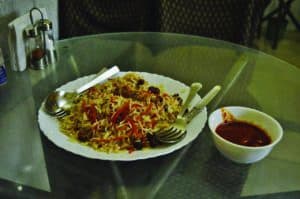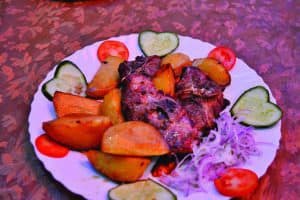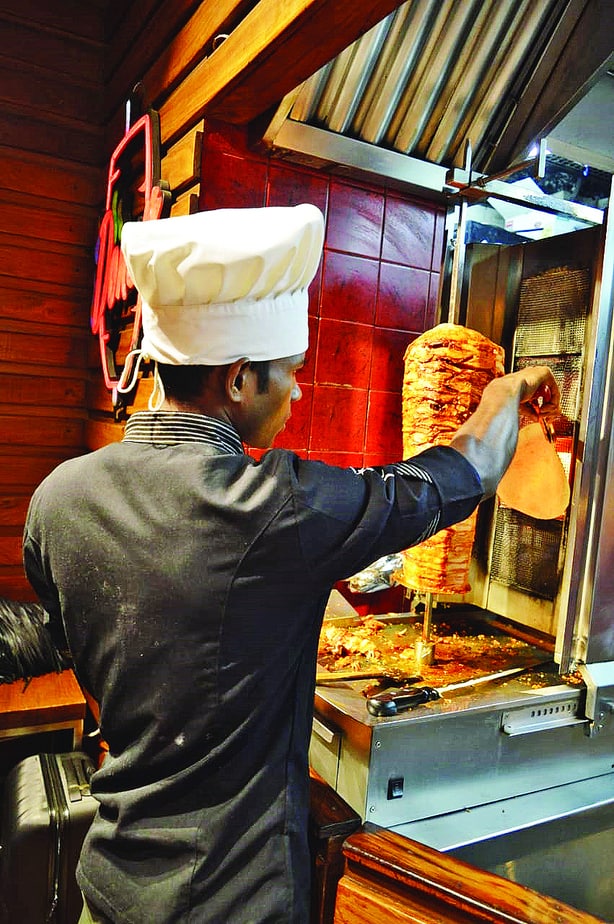Though Delhi is famous for kababs, butter chicken and chole bhature, it also has a variety of eateries which serves cuisines from all around the world, from Russia to Tibet
To experience the best of exotic cuisines from around the world, you don’t need to step out of Delhi. All you have to do is explore the nooks and crannies of the city for the often not-so- famous eateries that nonetheless serve sumptuous food from across the borders. From Turkish to Iraqi to Russian and Uzbek, you are bound to find everything in the city.
Iraqi/Afghan cuisine
Away from the posh and ultra-modern parts of South Delhi’s Saket, lies an urban village named ‘Khirki’. Named after Feroz Shah Tughluq’s Khirki Masjid, this area is home to people of various nationalities: African, Afghan and Iraqi, indicated by roads lined with restaurants offering cuisines from these countries.
Kyamuddin, a 25-year-old Afghan refugee, decided to open a restaurant in the area to bring back the taste of home-cooked food for Afghans who have been residing in India. However, when the restaurant started in 2010, not only the Afghans but Iraqis too started flocking to his small restaurant. “That is when I started cooking Iraqi food as well”, says Kyamuddin.
In fact, the most sought after dish at Kyamuddin restaurant is the Iraqi styled ‘sheek kabab’. Soft and succulent, these little pieces of chicken are put on an iron skewer and then roasted in a charcoal grill. The principal difference between the Indian and the Iraqi kabab is that the Iraqi ones are put straight into the fire, without any extra coating of spices. “I only marinate the pieces of chicken and mutton with lemon and a tinge of butter”, says Kyamuddin.
Another specialty at Kyamuddin’s restaurant is the Iraqi biryani. The Iraqi version is much less spicy than the Mughlai and gives off a delectable aroma of dry fruits. Served with a ‘rajma’ curry, the Iraqi ‘pulav’ is cooked in minimum oil while the pieces of chicken are finely roasted. The murg or the Iraqi chicken curry is cooked in no oil or spices and is served with the heavy ‘khameeri’ or the Afghan bread.
With a pocket pinch of just R300 for two, Kyamuddin’s Iraqi and Afghan Café is a certainly a place that all food lovers must visit.
Turkish cuisine
Just opposite Kyamuddin’s Afghan and Iraqi café is the plush Select Citywalk Mall. Apart from the popular fast food joints like KFC and Burger King serving the regular burger and chicken wings, there are restaurants offering exotic cuisines, including the ‘Ala Turka’ which serves appetising Turkish food. “I came to India from Turkey to study in 1996. But when I came here, a big problem that I faced was digesting the spicy Indian food. Gradually I became accustomed to it but I realised what problems foreigners like me faced when they came to India. So I decided to bring in a slice of my own country here”, says Sarjan, owner of ‘Ala Turka’ and a commerce postgraduate from Delhi University.
The star delicacy at ‘Ala Turka’ is the Doner kabab. A huge mound of chicken is grilled on a constantly rotating machine. From there, slices of chicken are cut and served as kababs. While Indian kababs are roasted over a hot charcoal fire, the Turkish kabab is cooked very slowly. “As the chicken grills slowly, the fat on the skin melts and liquefies. Though most of the fat goes away, some of the liquid stays in the chicken, thus giving the Doner kabab its taste”, says Sarjan.
With special Turkish cooks in the kitchen, ‘Ala Turka’ brings a slice of Turkey right to the heart of New Delhi. A full hearty meal at the Turkish fast food joint costs around R700 for two.
Uzbek and Russian cuisine
Every year, Delhi hosts tourists from Russia and Uzbekistan in large numbers. To cater to their food requirements, a group of Indian youngsters decided to open a restaurant after learning the tricks of cooking Uzbek food from the tourists. “That is how Tashkin restaurant started. We saw a lot of people coming from Uzbekistan and staying in the hotels nearby. However, there was no restaurant in the area that served their cuisine. We are the first ones to do so”, says Rakesh Yadav, one of the owners of the Paharganj eatery. They learnt the recipes by talking to tourists and have mastered them over the years.
The Uzbek mutton stew or the Basma is the specialty of this eatery. To make the stew, it is essential to boil a portion of the mutton leg which, according to Yadav, produces the maximum amount of broth. The broth is mixed with little bit of melted butter, salt and vegetable stock. Pieces of boiled potatoes and carrots are added to this sumptuous and healthy delicacy. The Uzbek ‘pulav’ is one of the more popular dishes and is quite similar to the Iraqi biryani.
However, it is not only Uzbek food that Tashkin restaurant serves. It is home to Russian delicacies as well. “We just wanted to expand and venture into a new cuisine,” says a beaming Yadav. He claims that his restaurant is a favourite hangout of Russians visiting the country.
The Kazon kebab is their star Russian delicacy. Served with pieces of fried potato, the dish consists of three large pieces of mutton which are just marinated with salt and lemon and then burnt on a charcoal fire. Another Russian dish is the Tabahat Kebab, which is large leg pieces of chicken marinated with turmeric and salt and then grilled. “Russian food is neither spicy nor oily, hence it is very different from Indian food,” says Yadav. A meal for two people at Tashkin will cost R500 approximately.
Tibetan cuisine
A visit to the Majnu Ka Tila area of North Delhi near the Delhi University North Campus, and you are transported from the dusty lanes of the Indian capital to a small bylane in Tibet. The Tibetans started settling in this area of the city right after the 1962 Indo-Sino War, and set up their own colony. Among the lines of Tibetan artefact shops and a pretty old Buddhist monastery, one can also get a taste of their sumptuous cuisines. Right in front of the monastery, sits 45-year-old Pema with her home-made laphing. Laphing is nothing but a roll of wheat stuffed with soyabean. But it is the sauce, and a secret white ingredient that gives it its signature spicy taste, says Pema. Priced at R40 a plate, people come from all nooks and corners of the city just for a taste of her laphing. “I religiously come once a week to have a taste of Pema Aunty’s laphing. It’s the best thing in Delhi”, says Siddharth Rege, a resident of Mayur Vihar.
There are other dishes that make this area a food lover’s paradise. There are many small joints around the settlement that serve various other delicacies like Portomein, their signature hand-made noodles, and pork and buff momos and thukpas. Eating at Majnu-Ka-Tila will cost you around R300.





